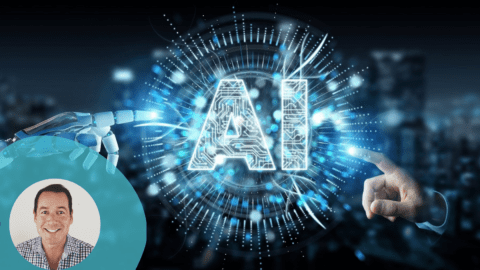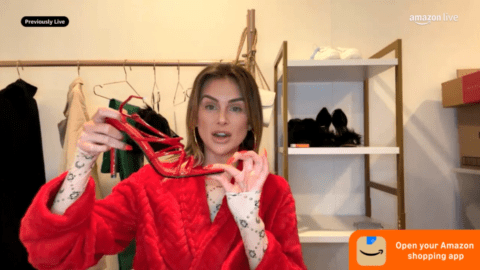Social media’s impact on retail has been well-documented: as many as 76% of consumers have purchased a product they saw in a brand’s social media post, according to Curalate. More than half of these purchases are ultimately made online — 11% of shoppers made the purchase immediately, while 44% later purchased the item online.
But not all social channels offer the same audience, reach or impact. It’s increasingly clear that the most visually oriented platforms are leading the charge to generate traffic, brand awareness and more sales. Retailers are being presented with valuable opportunities to deliver exclusive promotions on Instagram and Facebook, and Instagram may be the true wild card here — traffic on the platform is projected to grow 3X faster than overall social traffic, according to Salesforce.
Some of Instagram’s strong growth potential comes from the platform’s efforts to improve “shoppability,” an area where social networks as a whole have lagged. As many as 78% of retailers in the apparel, department store, big box and specialty sectors — and 41% of 400+ brands — have shoppable Instagram accounts, according to the 2018 Gartner L2 Social Platforms and Influencers Intelligence Report. Beauty companies rank second, at 68%, while activewear is not far behind at 61%.
Advertisement
In fact, shopping has become so intertwined with Instagram that the social network has reportedly been developing its own stand-alone e-Commerce app. The proposed app, called IG Shopping, will let shoppers browse and purchase items from retailers they follow.
Burberry is one of the latest retailers to launch an Instagram campaign with the unveiling of its monthly “B Series” product releases. On the 17th day of every month, these products are made available for 24 hours, exclusively through Instagram, China-based WeChat, Japan-based Lin and Korea-based Kakao. The items will not be available in stores or on Burberry.com.
“Culturally, there’s the idea of FOMO, or getting in on something while you can,” said Laura Davis-Taylor, Principal Consultant of Retail Experience Strategy at HighStreet Collective in an interview with Retail TouchPoints. “It’s 24 hours and you’re out. Burberry is trying to connect with the younger consumer, and trying to get out there to where the shopper is. It’s about how you use these different tools to create the behaviors you’re looking for.”
Facebook May Lack ‘Shoppability’ But It Does Have The Biggest Audience
Instagram’s parent, Facebook, offers a very different story when it comes to shoppability. In fact, only 17% of brands have adopted shoppable Facebook brand pages, according to Gartner L2. Retailers lead the way at 29%, while consumer electronics brands (such as Apple, Samsung, Lenovo and Sony) were second at 22%. These shoppable pages display content including a “Shop Now” button, which often takes users directly to the product on the e-Commerce site.
Facebook took a big hit to its reputation in 2018 with the fallout from the Cambridge Analytica scandal, so these figures could be rooted in consumer concerns about privacy and data security. As many as 71% of shoppers are concerned about security, while 65% admitted that privacy was an inhibitor to social shopping, according to a study from Sumo Heavy Industries.
Despite the recent negativity surrounding the platform, Facebook is still growing at an 11% year-over-year clip. It remains the largest social network in the world, with 2.23 billion monthly active users globally in Q2 2018, and has a growing user base of people aged 40 and up in the U.S. that can’t be ignored.
“More of the 40+ high-income shoppers are on Facebook now,” Davis-Taylor said. “Given that Facebook and Instagram are intertwined, you can gather better data analytics from Facebook and you can do stronger targeting. There are people who are actively buying off Facebook feeds.”
Retailers arguing the merits of Facebook vs. Instagram should be aware that there may be a youth-oriented bias against Facebook. There are likely to be “youth users behind these decisions who say: ‘I don’t use Facebook.’ Well, other people do,” said Davis-Taylor. “These 40s and 50s buyers still have as much buying power as some of the younger Gen Y and Z customers that are so digitally inclined.”
As Instagram User Base Reaches 1 Billion, Content Becomes Bigger Priority
Instagram’s growth has skyrocketed over the past two years, lending further credence to the idea that it should be a top social media choice going into 2019. While the network had 600 million monthly active users in December 2016, that number has since jumped to 1 billion as of June 2018.
At the time it announced this growth, Instagram launched IGTV, the video application designed to enable users to upload vertical videos that are up to 10 minutes long, or up to 60 minutes if the business or user is verified or popular. The app could be a major selling point for retailers seeking more context exposure and brand awareness, especially on a more mobile-friendly platform.
During a Gartner L2 panel discussion of fashion brands, Scott Lux, VP of Digital at Intermix, noted that retailers must have a “publishing mindset” when approaching social media, particularly given Instagram’s growth. In an age when retailers must commit to content-driven initiatives across all channels, investments in production studio talent remain imperative for retailers seeking to create compelling visuals for social channels that thrive on them, be they Instagram, Snapchat or Facebook.
“There’s a headline I read in an email newsletter that basically said: ‘Instagram killed the fashion magazine,’” Lux noted. “That sums up the challenge that brands are facing. Now we’re having to create ‘fashion magazine’-type content to push to our paid and organic channels through Instagram. That’s where it’s difficult, because you don’t necessarily have that editorial talent on staff and you have to make that determination — do you build to that or do you leave that to your brand partners?”
The rise of more visual social channels coincides with the growing effectiveness of user/consumer generated content (CGC). Visual CGC saw a 55% year-over-year increase in conversion lift in 2017, as well as a 96% interaction rate among shoppers, according to Bazaarvoice.
Retailers have recognized the benefits of visual CGC, according to the survey:
- 87% say it leads to increased conversions;
- 91% say it fosters a more engaging shopping experience; and
- 88% say it improves brand trust.
By incorporating CGC into shoppable social channels or product pages, retailers essentially give consumers a better chance to build a closer relationship.
“I’ve even gotten to the point where I’m pushing my retail clients using in-store digital signage to use consumer-generated content because it’s authentic and it’s real,” Davis-Taylor said. “It doesn’t cost anything.”
QVC-HSN Parent Launches Social-Powered ‘Micro-Brands’ On Facebook And Instagram
As more retailers grasp how to use social media effectively, they may feel encouraged to build niches within various platforms. In the case of Qurate Retail Group, the retail giant is choosing to create channels that are largely separate from the remainder of its digital operations.
In July 2018, the parent company of the now-combined HSN and QVC launched two beauty “micro-brands” — Ellie Sugar and Fuss Beauty — via dedicated Facebook, Instagram and minimalist web pages. Unlike most retailers and brands, these “micro-brands” are only advertised on social media platforms, and consumers can only interact with them via Facebook and Instagram posts.
Ellie Sugar and Fuss Beauty feature a curated marketplace of beauty products selected from the Qurate portfolio to appeal to targeted consumers, with “thumb-stopping” video designed to catch the mobile shopper’s attention. Both brands’ Facebook and Instagram channels include shoppable content as a central value proposition.
“These platforms provide a gathering place for engaged beauty consumers and influencers and serve as marketplaces for the Qurate Retail family of beauty products across QVC, HSN and zulily,” said Mike George, President and CEO of Qurate Retail Group during a recent earnings call. “Paid social, which is our biggest increase in the mix of online marketing, is actually a higher lifetime value than those direct traditional methods, which to us is remarkable.”
While George admitted that it’s “hard to scale paid social efficiently,” Qurate is in the process of launching two more fashion brands – Du Jour at QVC and Curations at HSN – with this social-first strategy, according to a company statement. With these new brands in tow and Qurate furthering its paid social marketing spend, it’s clear that the company values social as a venue for product discovery and customer acquisition.
Twitter Lags As A Shopping Channel; Value Lies In Customer Service
Twitter never truly caught on in the shopping arena, as many had hoped when “buy buttons” first became a hot topic a few years ago. But the network clearly has value in customer service: as many as 83% of retailers use Twitter for customer service, up from 74% last year, according to Gartner L2.
Nearly 80% of tweets across 400 brands analyzed were replies to customers, the report said. In total, more than 70% of brands across all sectors use Twitter to answer questions or address concerns, an increase from 66% last year. The site is convenient for shoppers seeking immediate brand access, and it comes at a low cost for retailers — unlike major technologies such as chatbots.
Despite this increased adoption, fashion retailers and brands are still staying away from the platform, with only 33% using Twitter for customer service in 2017 — presumably in a bid to uphold their brand equity.
Always Remember: Social Strategies Should Meet The Consumer Where They Are
As the holiday season gets underway, retailers must leverage the continued growth of Facebook and Instagram to promote their products, deals and brand experience, while optimizing Twitter as a primary customer service channel. Additionally, now is the time to bring a sense of social exclusivity, so that the shopper can interact with the newest, most unique aspects of the brand at all times.
“Social is where the conversation exists right now,” said Andre Balazs, Digital Programming Director at Revlon during the Gartner L2 panel discussion. “It’s on Instagram, it’s on YouTube, that’s where the customers are. For example, the brands right now that are very successful are successful because they are part of the conversation in that space, and they are able to drive people into their digital channels and get them excited to enter the store.”









